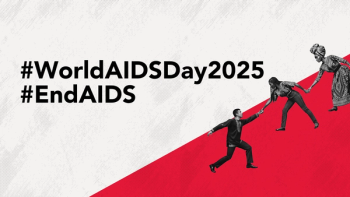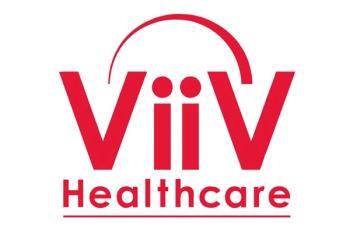
- December 2019
- Volume 4
- Issue 6
Alternative Antiretroviral Medication Delivery Systems Emerge to Treat, Prevent HIV Infection

Novel modes of delivery are imperative to improve HIV suppression and prevent transmission.
Most chronic disease states are treated with daily oral administration of medi­cations, which are often ideal because of ease of administration. However, real-life adher­ence to oral medications can be approximately 50%.1 Improved adherence has been seen with novel formulations of medications in disease states such as schizophrenia.2 Currently, all recommended initial HIV treatment/prevention regimens include daily oral administration. Novel formulations are necessary to provide options for patients who have difficulty swallowing, a history of medication nonadherence, or concerns about HIV disclosure or even those learning to cope with their HIV diagnosis.
Emerging alternative antiretroviral (ARV) delivery systems for HIV treatment and prevention include injectables, topicals, and implants. These delivery systems may give patients the ability to administer daily medica­tion less frequently and allow in-clinic admin­istration for those who have not disclosed their status and do not want to bring medi­cation bottles home. However, each system has advantages and disadvantages (Table 1). A review of novel ARV delivery methods is discussed in
INJECTABLE DRUGS: POPULAR BUT CHALLENGING
Injectable medications have the potential of rapid onset of action, improved medication adherence, and minimized concerns regarding absorption and dosing frequency. A few injectable ARVs are available, such as enfuvir­tide (T20), ibalizumab (IBA), and zidovudine (ZDV). T20 requires twice-daily subcutaneous administration and can lead to injection site reactions (ISRs), limiting its use. Intravenous (IV) IBA is used for patients with multidrug-resistant HIV in combination with optimized background oral ARV therapy (ART). IV ZDV is primarily used for intrapartum care to prevent perinatal HIV transmission. Otherwise, because of toxicity concerns, ZDV is no longer routinely recommended for HIV treatment. Although no long-acting injectables (LAIs) are currently available, those in development include non-nucleoside reverse transcriptase inhibitors (NNRTIs), integrase strand transfer inhibitors (INSTIs), and fusion inhibitors.
Coformulated cabotegravir/rilpivirine (CAB/ RPV), an INSTI and NNRTI combination, is the most-studied LAI for HIV treatment and prevention. The ATLAS and FLAIR studies assessed intramuscular CAB/RPV in virolog­ically suppressed patients. ATLAS included patients who were virologically suppressed for 6 months on any oral 3-drug ART, whereas FLAIR included patients who were virologically suppressed at least 20 weeks on abacavir/ lamivudine/dolutegravir. Both studies required an oral CAB plus oral RPV lead-in period for 4 weeks prior to LAI CAB/RPV initiation. Both studies found that CAB/RPV administered every 4 weeks was noninferior to oral therapy at 48 weeks.3,4 Over 97% of patients in both studies who completed a satisfaction survey preferred CAB/RPV over oral ART.4 CAB/ RPV was submitted to the US Food and Drug Administration for approval for HIV treatment simplification in early 2019.
A phase 3 study assessing the use of intra­muscular CAB/RPV given every 8 weeks is also under way. In addition, a phase 2/3 study is comparing LAI CAB and emtricitabine/ tenofovir disoproxil fumarate (FTC/TDF) for pre-exposure prophylaxis (PrEP).5
Despite the promise that LAI CAB/RPV has shown in patient satisfaction and clinical outcomes, using this medication in real-world settings poses many challenges. LAI CAB/RPV would require patients to be seen by a health care professional at least every 4 to 8 weeks for injection rather than every 3 to 6 months for routine follow-up. In addition, due to the long half-lives, prolonged toxicities may occur with unclear risk of resistance. Little is known about the potential harm and appropriate management of missed doses. As described in the studies, a 4-week lead-in period of oral CAB and RPV is required, and even though patient satisfaction was high in the studies, real-world adherence and satisfaction results are imperative to identify the appropriate population for this regimen.
Oral elsulfavirine, a prodrug of VM-1500, is a long-acting NNRTI with a half-life of about 8 days. Elsulfavirine with 2 nucleoside reverse transcriptase inhibitors was found to be noninferior to an efavirenz-based regimen, with fewer adverse drug reactions.6 Given
its long half-life, VM-1500A, an aqueous nanosuspension formulation, was developed to be administered intramus­cularly monthly or quarterly. VM-1500A is in a phase 1b study to assess the safety and pharmacokinetics of various dosing regimens.7,8
Albuvirtide inhibits HIV attachment to CD4 cells by adhering to gp41 and has the potential for extended interval infusions with its half-life of 11 days. IV albuvir­tide administered every 2 to 4 weeks in combination with an investigational IV monoclonal antibody (3BNC117) is being evaluated to assess its efficacy to maintain viral suppression.9 UB-421, an IV CD4 attachment inhibitor, was found to maintain viral suppression as monotherapy in patients who underwent oral ART interruption.10 UB-421 monotherapy is in phase 2/3 studies evaluating its use in patients previously stable on ART and those currently failing oral ART.11,12
The novel fusion inhibitors leronlimab and combi­nectin are being evaluated as subcutaneous injections for HIV treatment. Leronlimab, a CC chemokine receptor type 5 (CCR5) monoclonal antibody, and combinectin, an adnectin with multiple HIV entry inhibition methods, have the potential for weekly administration. Because adnectins are such small proteins, combinectin could potentially be a self-administered subcutaneous LAI.13 Leronlimab mono­therapy is being evaluated to assess efficacy in patients suppressed on oral ART and those failing on oral ART.14,15 Combinectin is currently in a phase 1 trial to assess the safety, tolerability, and pharmacokinetics in healthy study participants.16
GS-CA compounds, part of a new class called HIV capsid inhibitors, are involved in multiple steps of the HIV repli­cation cycle.17 Two of them, GS-CA1 and GS-6207, are being evaluated for HIV treatment and have been found to have high in vitro potency compared with dolutegravir.18 GS-6207, as a single subcutaneous injection, led to a sustained concentration in patients who were HIV negative, showing potential for quarterly administration.19 Phase 1 studies in people living with HIV are under way.20
TOPICAL DRUGS: A DISCREET OPTION
A unique and convenient option for HIV prevention, topical agents are particularly useful for individuals who fear stigma or seek a discreet prevention modality that their sexual partners do not need to know about. An ideal topical microbicide is easy to administer, confers imme­diate protection, provides a long duration of protection, is durable in multiple sites (vaginally and rectally), and is unaffected by the presence of other products (examples: intrauterine device, menstrual cup/sponge, recent rectal enema). The main topical ARVs include tenofovir 1% gel, TDF intravaginal ring, and dapivirine intravaginal ring/film.
Most clinical data are from the CAPRISA 004 trial, which assessed use of tenofovir gel in South African women aged 18 to 40 years who were sexually active and HIV nega­tive. Adherence was highly variable. Among high adherers (>80%), HIV incidence was reduced by 54%.21 In a subse­quent phase 1 pharmacokinetic study, a TDF intravaginal ring was assessed but discontinued early because 8 of 12 women developed vaginal ulceration.22 Rectal TDF gel was well tolerated in men who have sex with men/trans­gender women, but gel adherence was less than that of oral FTC/ TDF.23
There appears to be a growing amount of data regarding the dapivirine intravaginal ring, which was associated with high adherence/acceptability and achieves similar plasma/ vaginal fluid concentrations between pre- and postmeno­pausal women that exceed the 99% inhibitory concen­tration over 4000 times.24-26 The film formulation, which releases dapivirine in <10 minutes, results in genital/plasma concentrations similar to those of the intravaginal ring.27
IMPLANTABLE DRUGS: IN THE WORKS
Because of physiochemical properties and potency, most ARVs cannot be formulated as an LAI, like CAB/RPV.28 To overcome these barriers, long-acting (LA) implantable formulations are placed subcutaneously and use a variety of implants, including polymeric matrices, semiperme­able membranes, nonerodable silicone, and drug-eluting implants, to deliver ARVs for an extended period. Although most require surgical removal, biodegradable ARV implants are being developed.29,30
LA implantable ARVs are not yet in clinical trials but are under development, primarily for HIV prevention, with results that inspire optimism. Multiple LA tenofovir alafenamide implants have been found to provide teno­fovir concentrations higher than that required for effective pre-exposure prophylaxis (PrEP) for at least 3 months.31,32 Already under investigation as an LAI ARV, a nano­channel delivery implant provided CAB concentrations for 3 months that inhibited viral replication.33,34 Islatravir (MK-8591; EFdA) has a long plasma half-life that may allow once-weekly dosing when formulated for oral administra­tion or potentially annual implantation as a drug-eluting implant for PrEP.35-37 A dolutegravir injectable solution that solidifies after subcutaneous administration is also under investigation.38
Similar to when using LAIs for treatment, an oral lead-in period would be required for LA implantable ARVs. Partner ARVs with similar physiochemical and pharmacokinetic properties would need to be identified to formulate into a single implant to avoid inserting multiple implants for treatment purposes. Alternatively, LA implantable ARVs could be combined with LAI ARVs or oral formulations. Although multiple studies evaluating the LA implantable ARVs have found concentrations higher than that required for PrEP or virologic suppression, efficacy data are lacking.
PROMISE DESPITE PROBLEMS TO OVERCOME
Significant improvements have been made in ARV efficacy, safety, convenience, and accessibility. However, ARV efficacy for HIV treatment and prevention are directly associated with adherence, so in select patients, ARV administration with currently available oral options may not be feasible or ideal. A variety of ART delivery systems is critically needed to improve adherence for the treatment and prevention of HIV infection, because each modality comes with particular considerations.
Although initial results for these new delivery systems seem promising, clinical and regulatory barriers exist. In addition, data are needed on how to transition patients between oral to new ARV delivery systems, address missed doses, manage toxicities, and minimize drug-drug interactions, as well as use in special populations. Despite this, these emerging delivery systems hold great promise as additional tools to improve virologic suppression and prevent transmission.
Pandit is an associate professor and vice chair of research and scholarship in the Department of Pharmacy Practice and Science at the University of Maryland School of Pharmacy. Pandit serves as a clinical pharmacist in an HIV primary care clinic in Baltimore.
Patel is an associate professor of clinical pharmacy at the University of California, San Diego Skaggs School of Pharmacy and Pharmaceutical Sciences. His clinical interests include antimicrobial stewardship, HIV/hepatitis C virus coinfection, and HIV prevention.
Chastain is a clinical assistant professor at the University of Georgia College of Pharmacy, on the Southwest Clinical Campus of the Medical College of Georgia in Albany. He is also the infectious diseases pharmacist and cochair of the antimicrobial stewardship program at Phoebe Putney Memorial Hospital in Albany, Georgia.
*Indicates active members of the Society of Infectious Diseases Pharmacists (SIDP).
+Indicates active member of Making a Difference in Infectious Diseases (MAD-ID).
References:
- Brown MT, Bussell JK. Medication adherence: WHO cares? Mayo Clin Proc. 2011 Apr;86(4):304-14. doi: 10.4065/mcp.2010.0575. Epub 2011 March 9.
- Song X, El Khoury AC, Brouillette M, Smith D, Joshi K. Treatment discontinuation of long-acting injectables or oral atypical antipsychotics among medicaid recipients with schizophrenia. J Med Econ. 2019 Nov;22(11):1105-11 doi: 10.1080/13696998.2019.1615927. Epub 2019 May 23.
- Swindells S, Andrade-Villanueva JF, Richmond GJ, et al. Long-acting cabotegravir + rilpivirine as maintenance therapy: ATLAS week 48 results. Presented at Conference on Retroviruses and Opportunistic Infection; March 4-7, 2019; Seattle, Washington. Abstract 139.
- Orkin C, Arasteh K, Hernandez-Mora MG, et al. Long-acting cabotegravir + rilpivirine for high maintenance: FLAIR week 48 results. Presented at Conference on Retroviruses and Opportunistic Infection; March 4-7, 2019; Seattle, Washington. Abstract 140.
- NCT02720094. Safety and efficacy study of injectable cabotegravir compared to daily oral tenofovir disoproxil fumarate/emtricitabine (TDF/FTC), for pre-exposure prophylaxis in HIV-uninfected cisgender men and transgender women who have sex with men. U.S. National Library of Medicine. https://clinicaltrials.gov/ct2/show/NCT02720094?term=NCT02720094&rank=1. Accessed September 19, 2019.
- Murphy R, Kravchenko AV, Orlova-Morozova E, et al. Elsulfavirine as compared to efavirenz in combination with TDF/FTC: 48-week study. Presented at Conference on Retroviruses and Opportunistic Infection; February 13-16, 2017; Seattle, Washington. Abstract 452LB.
- Bichko V, Rogovoy B, Koryakova A, et al. Pre-clinical pharmacokinetics of elsulfavirine/VM1500A long acting injectable formulations. Presented at International AIDS Society; July 23-26, 2017; Paris, France. WEPEA0190.
- Viriom Initiates Phase 1 Clinical Trial of Once Monthly Injectable HIV Treatment [press release]. San Diego, California: Viriom. December 20, 2019. https://www.viriom.com/news/2018/12/20/viriom-initiates-phase-1-clinical-trial-of-once-monthly-injectable-hiv-treatment Accessed September 20, 2019.
- NCT03719664. Albuvirtide and 3BNC117 as long-acting maintenance therapy in virologically suppressed subjects (ABL). U.S. National Library of Medicine. https://clinicaltrials.gov/ct2/show/NCT03719664. Published January 201 Accessed September 19, 2019.
- Wang CY, Wong W, Tsai HC, Chen YH, Liao MJ, Lynn S. A phase 2 open-label trial of antibody UB-421 monotherapy as a substitute for HAART. Presented at Conference on Retroviruses and Opportunistic Infection; February 13-16, 2017; Seattle, Washington. Abstract 450LB.
- NCT03149211. To investigate the efficacy and safety of UB-421 monotherapy in HIV-1 infected adults. U.S. National Library of Medicine. https://clinicaltrials.gov/ct2/show/NCT03149211?term=NCT03149211&rank=1. Published April 2019. Accessed on September 16, 2019.
- NCT03164447. UB-421 combine with optimized background therapy regimen in multi-drug resistant HIV-1 infection patients. U.S. National Library of Medicine. https://clinicaltrials.gov/ct2/show/NCT03164447?term=ub-421&rank=7. Published May 2019. Accessed on September 16, 2019.
- NCT03902522. PRO 140 in treatment-experienced HIV-1 subjects. U.S. National Library of Medicine. https://clinicaltrials.gov/ct2/show/NCT03902522?term=leronlimab&rank=2. Published April 2019. Accessed September 19, 2019.
- NCT02859961. Study of PRO 140 sc as single agent maintenance therapy in virally suppressed subjects with CCR5-tropic HIV-1 infection. U.S. National Library of Medicine. https://clinicaltrials.gov/ct2/show/NCT02859961?term=leronlimab&rank=3. Published February 2019. Accessed September 19, 2019.
- Krystal M, Wensel D, Sun Y, et al. HIV-1 combinectin BMS-986197: a long-acting inhibitor with multiple modes of action. Presented at Conference on Retroviruses and Opportunistic Infection; February 22-25, 2016; Boston, MA. Abstract 97.
- NCT03984812. Evaluation of the safety, tolerability, and pharmacokinetics (PK) of GSK3732394 first-time-in-human (FTIH) study. U.S. National Library of Medicine. https://clinicaltrials.gov/ct2/show/NCT03984812. Published July 2019. Accessed September 12, 2019.
- Singh K, Gallazzi F, Hill KJ, et al. GS-CA compounds: first-in-class HIV-1 capsid inhibitors covering multiple grounds. Front Microbiol. 2019 Jun 20;10:1227. doi: 10.3389/fmicb.2019.01227.
- Tse WC, Link JO, Mulato A, et al. Discovery of novel potent HIV capsid inhibitors with long-acting potential. Presented at Conference on Retroviruses and Opportunistic Infection; February 13-16, 2017; Seattle, Washington. Abstract 38.
- Sager JE, Begley R, Rhee M, et al. Safety and PK of subcutaneous GS-6207, a novel HIV-1 capsid inhibitor. Presented at Conference on Retroviruses and Opportunistic Infection; March 4-7, 2019; Seattle, Washington. Abstract 141.
- NCT03739866. Safety, pharmacokinetics, and antiviral activity of GS-6207 administered subcutaneously in HIV-1 infected adults. U.S. National Library of Medicine. https://clinicaltrials.gov/ct2/show/NCT03739866?term=GS-6207&rank=1. Published July 2019. Accessed September 15, 2019.
- Abdool Karim Q, Abdool Karim SS, Frohlich JA, et al. Effectiveness and safety of tenofovir gel, an antiretroviral microbicide, for the prevention of HIV infection in women. Science. 2010;329(5996):1168-74. doi: 10.1126/science.1193748.
- Keller MJ, Wood L, Biilingsley JM, et al. Tenofovir disoproxil fumarate intravaginal ring for HIV pre-exposure prophylaxis in sexually active women: a phase 1, single-blind, randomized, controlled trial. Lancet HIV. 2019 Aug;6(8):e498-e508. doi: 10.1016/S2352-3018(19)30145-6.
- Cranston R, Lama J, Richardson BA, et al. MTN-017: rectal phase 2 extended safety and acceptability study of 1% tenofovir gel. Presented at Conference on Retroviruses and Opportunistic Infection; February 22-25, 2016; Boston, Massachusetts. Abstract 108LB.
- van der Straten A, Laborde N, Cheng H, et al. Adherence and acceptability of a dapivirine vaginal ring in postmenopausal US women. Presented at Conference on Retroviruses and Opportunistic Infection; February 22-25, 2016; Boston, MA. Abstract 873.
- Chen BC, Hoesley C, Salata RA, et al. Safety and pharmacokinetics of dapivirine vaginal rings in postmenopausal US women. Presented at Conference on Retroviruses and Opportunistic Infection; February 22-25, 2016; Boston, Massachusetts. Abstract 872.
- Nel AM, Haazen W, Russell M, et al. Local and systemic pharmacokinetic profile of dapivirine vaginal ring-004 when used continuously over various periods up to twelve weeks. Presented at Conference on Retroviruses and Opportunistic Infection; February 23-26, 2015; Seattle, Washington. Abstract 524.
- Bunge KE, Dezzutti CS, Macio I, et al. FAME-02: a phase 1 trial to assess safety PK and PD of gel* and film formulations of dapivirine. Presented at Conference on Retroviruses and Opportunistic Infection; March 3-6, 2014; Boston, Massachusetts. Abstract 42LB.
- Barrett SE, Teller RS, Forster SP, et al. Extended-duration MK-8591-eluting implant as a candidate for HIV treatment and prevention. Antimicrob Agents Chemother. 2018 Sep 24;62(10). pii: e01058-18. doi: 10.1128/AAC.01058-18.
- Gendelman HE, McMillan J, Bade AN, Edagwa B, Kevadiya BD. The promise of long-acting antiretroviral therapies: From need to manufacture. Trends Microbiol. 2019 Jul;27(7):593-606. doi: 10.1016/j.tim.2019.02.009.
- Flexner C. Antiretroviral implants for treatment and prevention of HIV infection. Curr Opin HIV AIDS. 2018 Jul;13(4):374-380. doi: 10.1097/COH.0000000000000470.
- Gunawardana M, Remedios-Chan M, Miller CS, et al. Pharmacokinetics of long-acting tenofovir alafenamide (GS-7340) subdermal implant for HIV prophylaxis. Antimicrob Agents Chemother. 2015;59(7):3913-9. doi: 10.1128/AAC.00656-15.
- Gatto G, Girouard N, Brand RM, et al. Pharmacokinetics of tenofovir alafenamide by subcutaneous implant for HIV PrEP. Presented at Conference on Retroviruses and Opportunistic Infection; March 4-7, 2018; Boston, Massachusetts. Abstract 486.
- Pons-Faudoa F, Sizovs A, Grattoni A. Sustained release of cabotegravir from nanochannel delivery implant for HIV PrEP. Presented at International AIDS Society; July 21-24, 2019; Mexico City, Mexico. TUPEA106.
- Pons-Faudoa FP, Sizvos A, Di Trani N, et al. 2-hydroxypropyl-β-cyclodextrin-enhanced pharmacokinetics of cabotegravir from a nanofluidic implant for HIV pre-exposure prophylaxis. J Control Release. 2019;306:89-96. doi: 10.1016/j.jconrel.2019.05.037.
- Michailidis E, Marchand B, Kodama EN, et al. Mechanism of inhibition of HIV-1 reverse transcriptase by 4’-ethynyl-2-fluoro-2’-deoxyadenosine triphosphate, a translocation-defective reverse transcriptase inhibitor. J Biol Chem. 2009;284(51):35681-91. doi: 10.1074/jbc.M109.036616.
- Grobler J, Fillgrove K, Hazuda D, et al. MK-8591 potency and PK provide high inhibitory quotients at low doses QD and QW. Presented at Conference on Retroviruses and Opportunistic Infection; March 4-7, 2019; Seattle, WA. Abstract 481.
- Matthews RP, Barrett SE, Patel M, et al. First-in-human trial of MK-8591-eluting implants demonstrates concentrations suitable for HIV prophylaxis for at least one year. Presented at International AIDS Society; July 21-24, 2019; Mexico City, Mexico. TUAC0401LB.
- Kovarova M, Benhabbour SR, Massud I, et al. Ultra-long-acting removable drug delivery system for HIV treatment and prevention. Nat Commun. 2018;9(1):4156. doi: 10.1038/s41467-018-06490-w.
- NCT03164564 Evaluating the safety and efficacy of long-acting injectable cabotegravir compared to daily oral TDF/FTC for pre-exposure prophylaxis in HIV-uninfected women. U.S. National Library of Medicine. https://clinicaltrials.gov/ct2/show/NCT03164564. Published November 2018. Accessed September 20, 2019.
- Markowitz M, Frank I, Grant RM, et al. Safety and tolerability of long-acting cabotegravir injections in HIV-uninfected men (ÉCLAIR): a multicenter, double-blind, randomized, placebo-controlled, phase 2a trial. Lancet HIV. 2017;4(8):e331-e3 doi: 10.1016/S2352-3018(17)30068-1.
- Xie D. Efficacy and safety of long acting HIV fusion inhibitor albuvirtide in antiretroviral-experienced adults with HIV-1: interim 48 week results from the randomized, controlled, phase 3, non-inferiority TALENT study. Presented at HIV Glasgow; October 23-26, 2016. Glasgow, United Kingdom.
- Dhody K, Kazempour K, Pourhassan N, Maddon PJ. PRO 140 SC: long-acting, single-agent maintenance therapy for HIV-1 infection. Presented at Conference on Retroviruses and Opportunistic Infection; March 4-7, 2019; Seattle, Washington. Abstract 486.
Articles in this issue
about 6 years ago
The Year Ends With a Big Step in PrEP and PEPabout 6 years ago
Robert F. Poirier, Jr. MD, on the Approval of Lefamulin for CABPabout 6 years ago
Karam Mounzer, MD, on the Approval of Dolutegravir/Lamivudineabout 6 years ago
Two More Agents Bolster the Arsenal Against Gram-Negative Resistanceabout 6 years ago
What's on Your Antimicrobial Stewardship "Wish List"?about 6 years ago
Hepatitis A Outbreaks on the Rise in the USabout 6 years ago
Get Off the SOFA! Introducing the Quick Pitt Bacteremia ScoreNewsletter
Stay ahead of emerging infectious disease threats with expert insights and breaking research. Subscribe now to get updates delivered straight to your inbox.



















































































































































































































































































